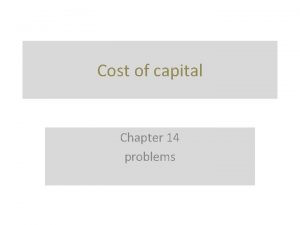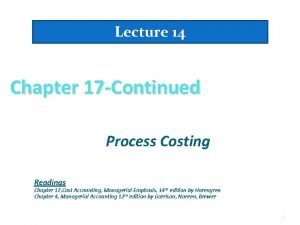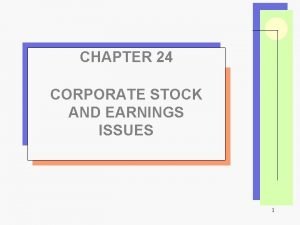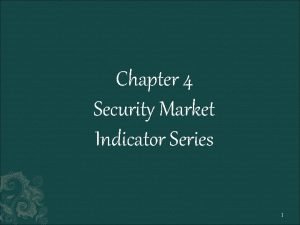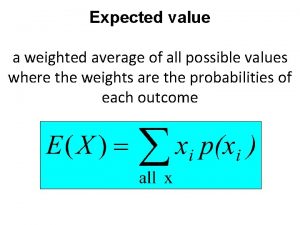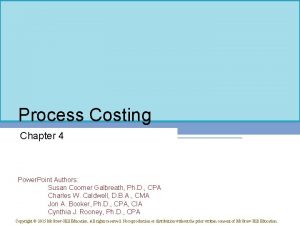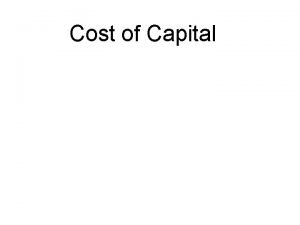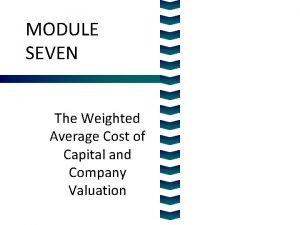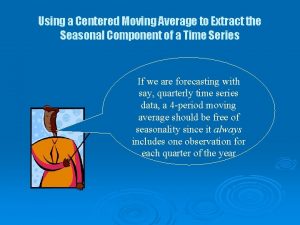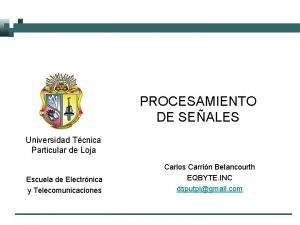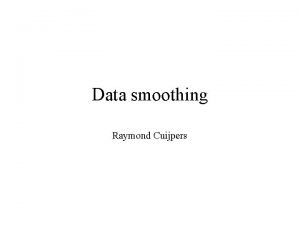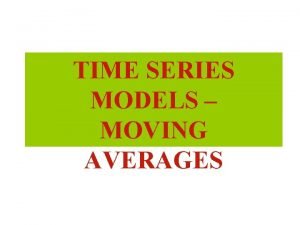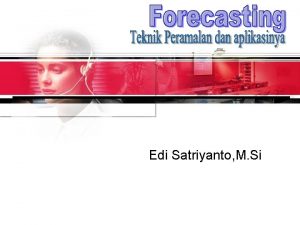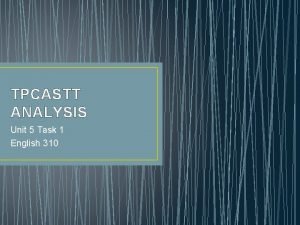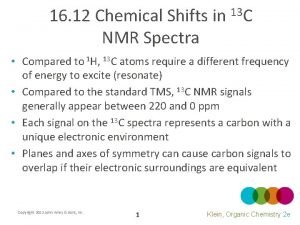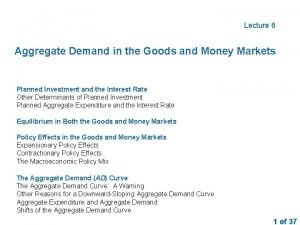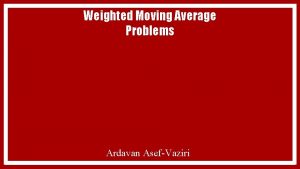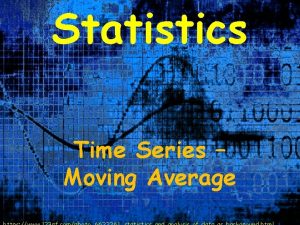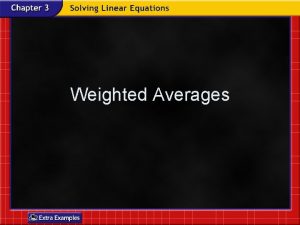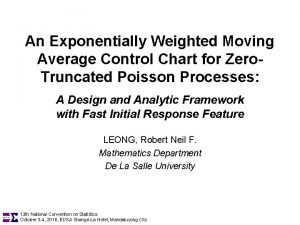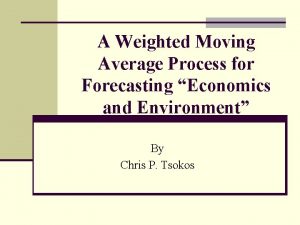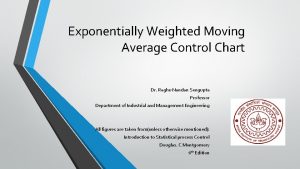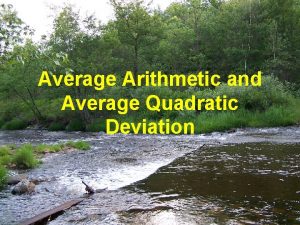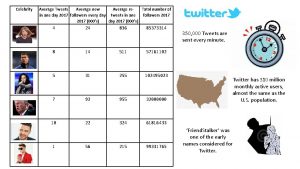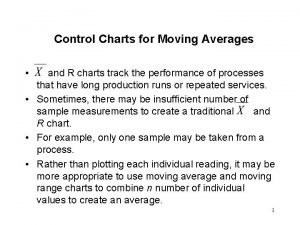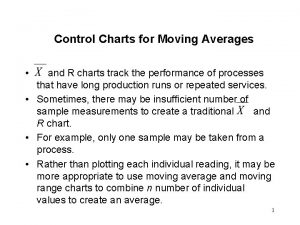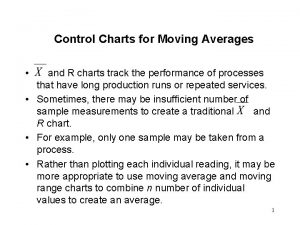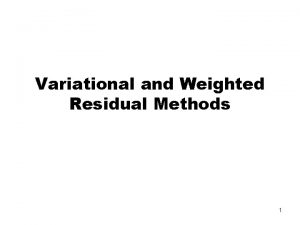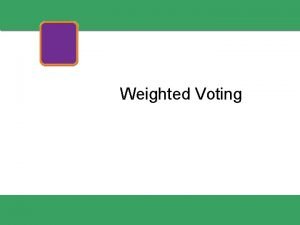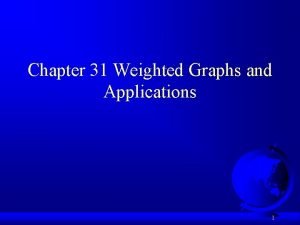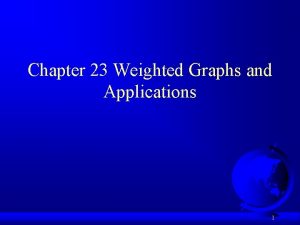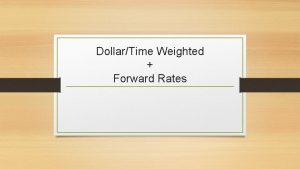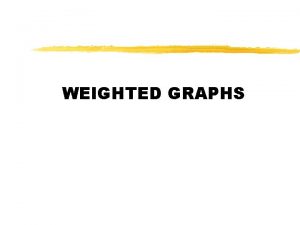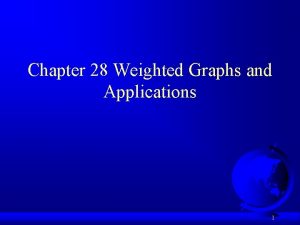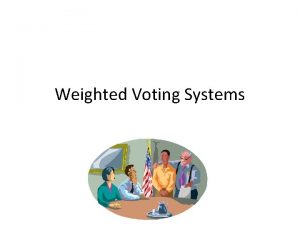Weighted moving average charts for detecting small shifts





























- Slides: 29

Weighted moving average charts for detecting small shifts in process mean or trends The wonders of JMP 1

Shifts in the Process Mean and process knowledge The X-bar chart is designed to detect changes in the Process Mean. In a mature Process, there may be a body of Process knowledge which suggests which types of changes in the Process Mean are likely to occur. this can be important in finding ways to detect relatively small changes in the mean which the four rules are unlikely to detect. 2

Sustained changes in the Process Mean Experience has shown that there are two common types of sustained changes in the Process Mean: • A sustained shift in the Process Mean to a new value. • Slow trending in the Process Mean up or down. 3

Moving Average Charts There are two types of Moving Average charts designed to be sensitive to these types of Process Mean changes: • The Uniformly Weighted Moving Average Chart, UWMA chart, (also known as the Arithmetic Moving Average chart, AMA chart) • The Exponentially Weighted Moving Average chart, EWMA chart, (also known as the Geometric Moving Average Chart, GMA chart) 4

Which to use? Each of the two is to be used depending on the type of Process change one wishes to detect: • For a sustained shift in the Process Mean to a new value, use the Uniformly Weighted Moving Average chart. • For a slowly trending Process Mean, use the Exponentially Weighted Moving Average chart. 5

Moving Average charts in JMP Each point on a Uniformly Weighted Moving Average (UWMA) chart, also called a Moving Average chart, is the average of the w most recent subgroup means (called “span”), including the present subgroup mean. These are often referred to as Arithmetic Moving Average (AMA) charts. These are often used in detecting a consistent shift in the Process Mean rapidly. 6

JMP control limits If we assume the sample sizes in each subgroup are equal, then: and so the three sigma limits for n subgroups (or spans) will be: 7

For first 45 data points of Example 6. 7 in the text (using subgroups of size two) 8

Note: • At time point one, there is only one point so that the limits are wider here. • At all other time points the limits are divided by the square root of 2 and so are narrower. 9

Compare to the Xm. R chart for the same data: 10

The Individuals Chart: 11

Example 6. 7 data with span of two: 12

Note: • The Moving Average chart picked out subgroup 4 as out of control due to the tighter limits. • The Individuals Chart showed that subgroup was in control (though near the limits). • The Individuals Chart did show why the Range chart was out of control at time 25. 13

One can specify different “moving average spans”. • Moving average span is JMP talk for the number of subgroups to average over. • Let’s look at a moving average span of three. • Notice what happens to the limits. 14

Example 6. 7 data with span of three: 15

With span of five: 16

Properties of spans • The larger the span the tighter the limits. • For larger spans, averaging is done over more time points so short occurrences of Special Cause may be averaged out. • Larger spans may take longer to detect a shift in the mean, this depends of the size of the shift relative to Common Cause. • Experience is the best guide for span size. 17

Exponentially Weighted Moving Average Charts in JMP Each point on an Exponentially Weighted Moving Average (EWMA) chart, also referred to as a Geometric Moving Average (GMA) chart, is the weighted average of all the previous subgroup means, including the mean of the present subgroup sample. These are very useful in detecting trends since the most recent points receive the greatest weight. 18

EWMA charts and weights • EWMA charts are formed by choosing a weight parameter r, which is a number between 0 and 1. • The value of r is the weight given to the most recent data point. • For subgroup size=1, a value of r=1 would correspond to an Individuals Chart. 19

EWMA calculations: For i>1, 20

Or more generally For i>1, Note: • The coefficients are all less than 1. • The coefficients sum to 1. • This means the variance of the weighted average is less than the individual values. 21

Choice of weight values: • A low weight value, say around. 1 to. 2, would give a chart which behave much like a UWMA (or AMA) chart with a large span. • A high weight near one would be much like an Individuals chart. • In practice, weights around r=. 5 are used. 22

EWMA for Data of Example 6. 7 23

Which charting was best? • The UWMA (or AMA) picked up a mean shift early on for spans of two or three. • The EWMA chart did not pick this up since it was a shift in process mean, not a trend. • Experience with the process is the best guide. 24

Another Example JMP Data set (there are 5 observations per subgroup but the UWMA and EWMA charts still work). 25

That was X-bar, now UWMA 26

Now EWMA with r=. 5 27

Why did the EWMA chart work? • Whenever there is trending, the most recent points have the most information. • The X-bar and R charts put all of the weight each on the most recent sample. • The UWMA charts weight each point equally in the span. • The EWMA chart weights the most recent signals with higher weights, this makes the signal to noise ratio the largest (largest signal gets most weight). 28

Caution! If you graph your data every possible way you risk getting false signals! People do that anyway but don’t be that guy! 29
 Weighted and non weighted codes in digital electronics
Weighted and non weighted codes in digital electronics Weighted average inventory cost method
Weighted average inventory cost method Fama's llamas has a weighted average
Fama's llamas has a weighted average Equivalent units fifo and weighted average
Equivalent units fifo and weighted average How to compute legal capital
How to compute legal capital In a price weighted average stock market indicator series
In a price weighted average stock market indicator series Expected value example
Expected value example Process costing fifo vs weighted average
Process costing fifo vs weighted average Weighted average cost of capital
Weighted average cost of capital Exponentially weighted average
Exponentially weighted average Weighted average cost inventory
Weighted average cost inventory Centered moving average formula
Centered moving average formula Filtro moving average
Filtro moving average Convolution moving average
Convolution moving average Moving average time series forecasting
Moving average time series forecasting Contoh soal single moving average
Contoh soal single moving average Semi average data genap
Semi average data genap Detecting havex
Detecting havex Detecting evolutionary forces in language change
Detecting evolutionary forces in language change Intrusion.win.ms14-068.ta
Intrusion.win.ms14-068.ta How do fraud symptoms help in detecting fraud
How do fraud symptoms help in detecting fraud Sniffer for detecting lost mobiles
Sniffer for detecting lost mobiles What is the difference between speed and velocity
What is the difference between speed and velocity His cart might be a flower bed
His cart might be a flower bed Change in supply and change in quantity supplied
Change in supply and change in quantity supplied Ela shifts
Ela shifts Tpcastt notes
Tpcastt notes Hydrohalogenation mechanism
Hydrohalogenation mechanism What does tpcastt
What does tpcastt Demand curve shifts
Demand curve shifts


